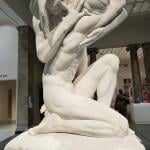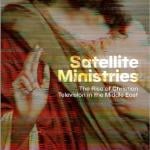A few scattered notes on this section of John’s first epistle.
1) There is a repeated emphasis on the contrast between word and action, word and walk. Three times John uses the clause “if we say that” (1:6, 8, 10), and another three times he uses “the one who says” (2:4, 6, 9). In each case, something in the conduct of the speaker falsifies his words. John gives a pragmatic test of truth: Our words must be confirmed by our practice in order to be considered true.
2) A few additional notes on the outline offered in my sermon notes. First, the word “light” is used six times in 1 John – and the six uses are clustered in 1:5-7 and 2:8-10. Likewise, the word “darkness” is also used six times, and its distribution is virtually the same (2x in 1:5-6, 4x in 2:8-11). These word clusters thus form a frame around this section.
Second, the word “walk” is distributed in a similar fashion. John uses “walk” fives times in his epistle, 2x in 1:6-7, once in 2:11. Thus, “walk” along with the light/dark contrast frames this section. But two uses of “walk” are found at the center of this section, in 2:6,
Third, the word “sin” is first used in the letter at the end of 1:7, and then used another 7x in 1:8-2:2. The noun or verb “sin” occurs another 20 or so times in the letter, but this cluster of uses marks this as a distinct unit. (Perhaps the reference to forgiveness of sins in 2:12 forms some kind of inclusio with this section.)
Though 1:7b (or 1:8)-2:2 forms a distinct unit, it splits in two with the direct address, “My little children” (2:1). Further, the structure of 1:8-10 indicates that it forms a distinct sub-unit. Verses 8 and 10 consist of a conditional sentence of similar content and structure:
A. If we say that we have no sin/have not sinned
B. we are self-deceived/make Him a liar
C. truth/word is not in us.
Verse 9 has a similar structure, but in content contrasts with the surrounding verses:
A. If we confess our sins
B. faithful He is and just
C. to forgive and cleanse.
If we can press the parallels, this suggests that God’s “faithfulness and righteousness” contrasts to self-deceit and making God a liar; and there must be some connection between forgiveness of sin/cleansing from unrighteousness and the truth or word of God dwelling in us.
3) 2:1 and 2:7 are parallel not only because both begin with an affectionate direct address to the audience, but also because in both John declares his intention for writing: “I write that you may not sin” (2:1); “Not a new commandment I write to you” (2:7).
4) At the end of this section, John again writes several sentences with parallel syntax and contrasting content. Verse 10 runs:
A. The one who loves his brother
B. remains in the light
C. and there is no skandal in him.
Verse 11 has a matching structure:
A. The one who hates his brother
B. is in darkness/walks in darkness
C. and doesn’t know where he goes.











